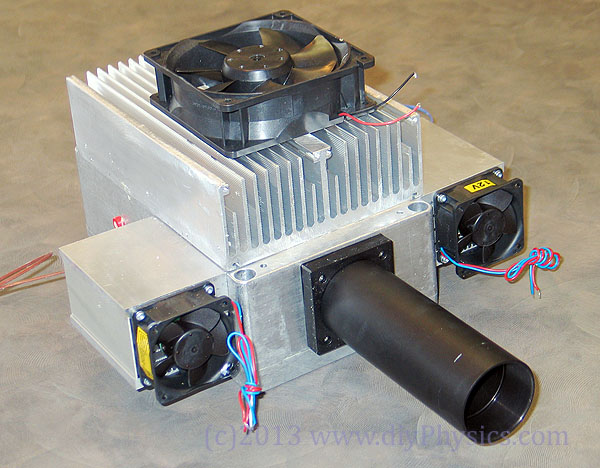
The photomultiplier tubes (PMT) is the workhorse detector in particle physics and many other fields that require detection of light at extremely low levels. However, the long-wavelength response of PMTs is not only low because of low quantum efficiency, but also because thermionic emission at room temperature causes swamps low-level signals with noise.
Reducing dark counts is especially important in photon-counting applications, especially when attempting to detect photons in the near-infrared. For example, the dark count of many PMTs rated for a wavelength range from 400 to 1200 nm, is in the hundred of thousands of counts when not cooled—making it virtually useless for detecting almost anything but the strongest signal. When cooled to -20 °C, the dark count is reduced to just a few tens counts. As such, in general, the use of PMTs that detect above 600 nm almost mandate a cooled housing.
We constructed a thermoelectrically-cooled housing to experiment with cooling a standard 2” face-on PMT. Although appropriate PMT noise reduction was achieved (one order of magnitude), the thermal efficiency of the do-it-yourself housing design was low, so lessons learned from this build will be used in a second-generation cooled housing.

